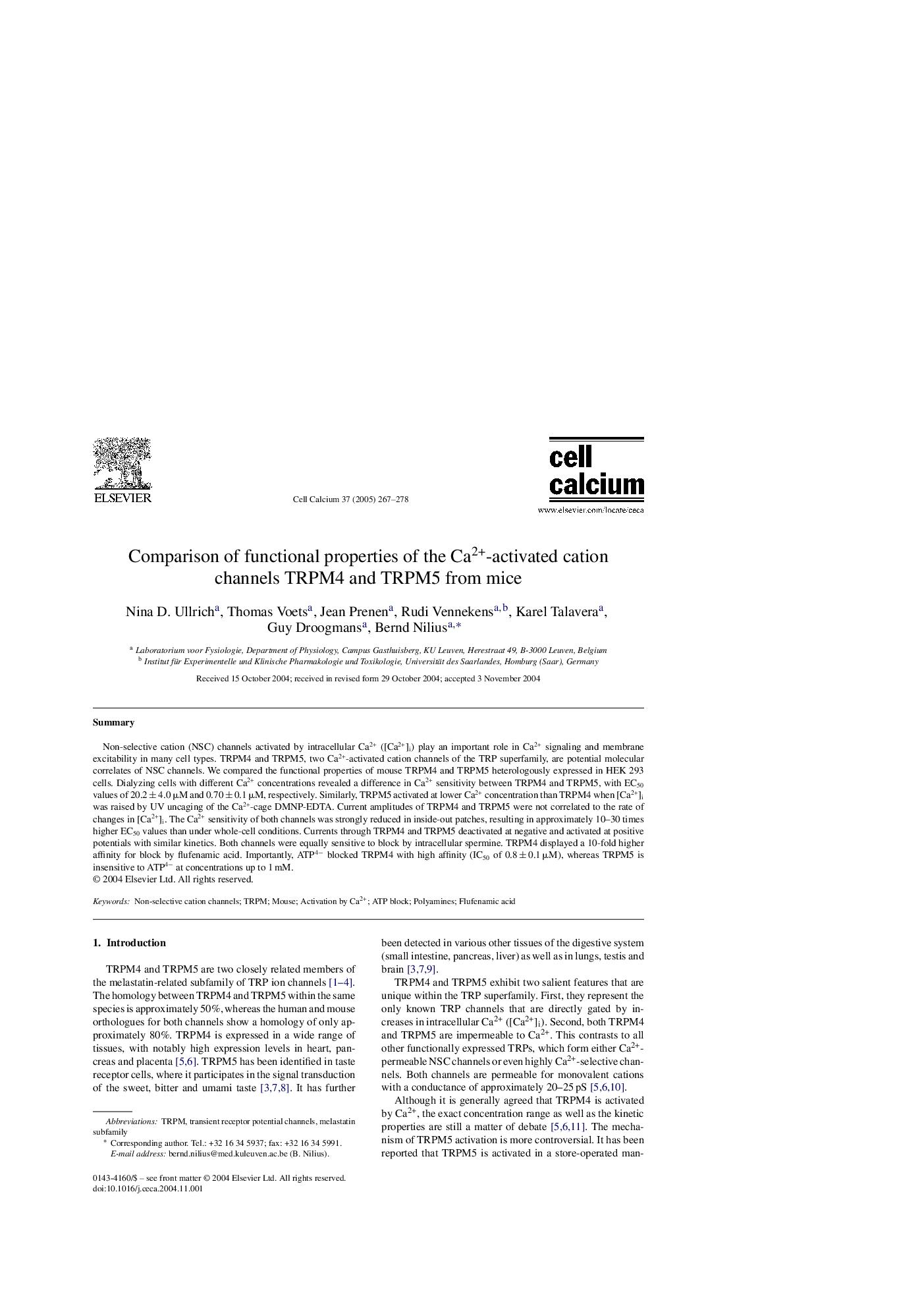| Article ID | Journal | Published Year | Pages | File Type |
|---|---|---|---|---|
| 10926654 | Cell Calcium | 2005 | 12 Pages |
Abstract
Non-selective cation (NSC) channels activated by intracellular Ca2+ ([Ca2+]i) play an important role in Ca2+ signaling and membrane excitability in many cell types. TRPM4 and TRPM5, two Ca2+-activated cation channels of the TRP superfamily, are potential molecular correlates of NSC channels. We compared the functional properties of mouse TRPM4 and TRPM5 heterologously expressed in HEK 293 cells. Dialyzing cells with different Ca2+ concentrations revealed a difference in Ca2+ sensitivity between TRPM4 and TRPM5, with EC50 values of 20.2 ± 4.0 μM and 0.70 ± 0.1 μM, respectively. Similarly, TRPM5 activated at lower Ca2+ concentration than TRPM4 when [Ca2+]i was raised by UV uncaging of the Ca2+-cage DMNP-EDTA. Current amplitudes of TRPM4 and TRPM5 were not correlated to the rate of changes in [Ca2+]i. The Ca2+ sensitivity of both channels was strongly reduced in inside-out patches, resulting in approximately 10-30 times higher EC50 values than under whole-cell conditions. Currents through TRPM4 and TRPM5 deactivated at negative and activated at positive potentials with similar kinetics. Both channels were equally sensitive to block by intracellular spermine. TRPM4 displayed a 10-fold higher affinity for block by flufenamic acid. Importantly, ATP4â blocked TRPM4 with high affinity (IC50 of 0.8 ± 0.1 μM), whereas TRPM5 is insensitive to ATP4â at concentrations up to 1 mM.
Related Topics
Life Sciences
Biochemistry, Genetics and Molecular Biology
Cell Biology
Authors
Nina D. Ullrich, Thomas Voets, Jean Prenen, Rudi Vennekens, Karel Talavera, Guy Droogmans, Bernd Nilius,
